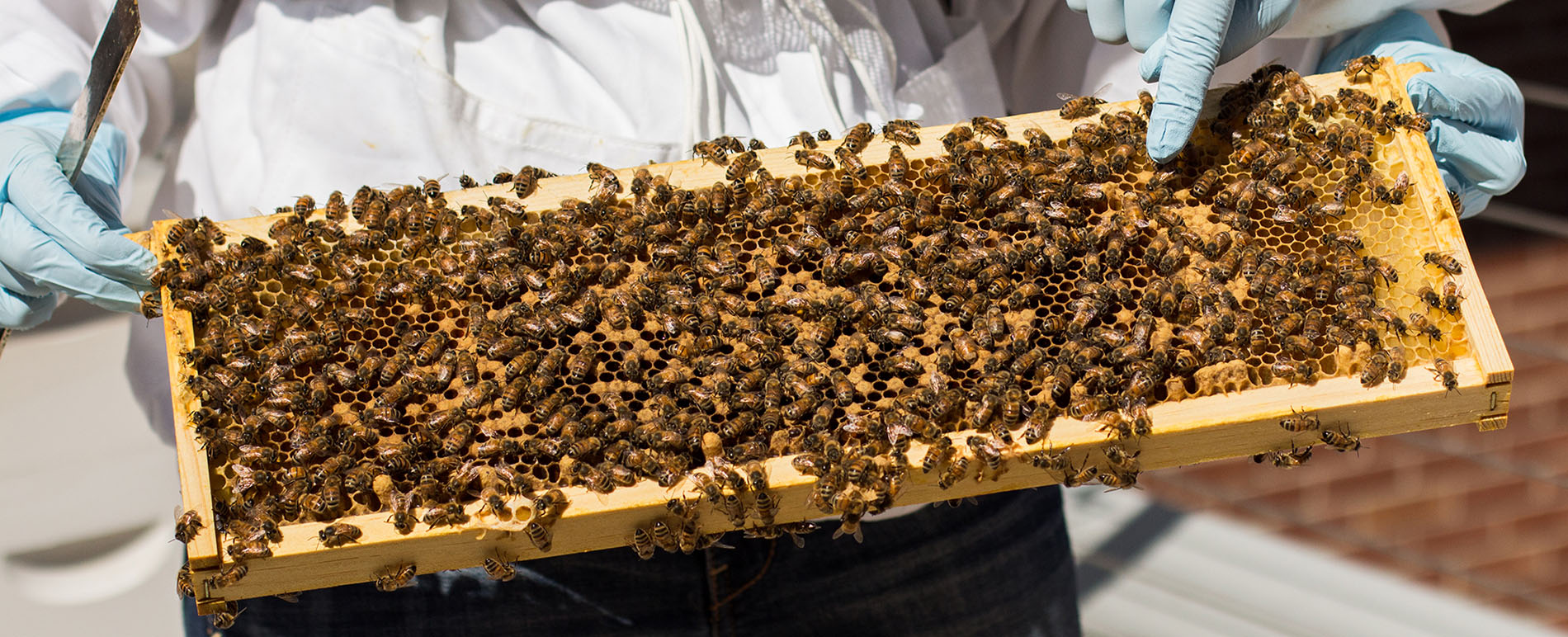
Know Your Stingers
As the spring season commences, insects have emerged from their winter homes to do their part to pollinate the environment. While Georgia Tech is of course home to yellow jackets, it’s also home to many other insects that are part of the complex ecosystem of campus.
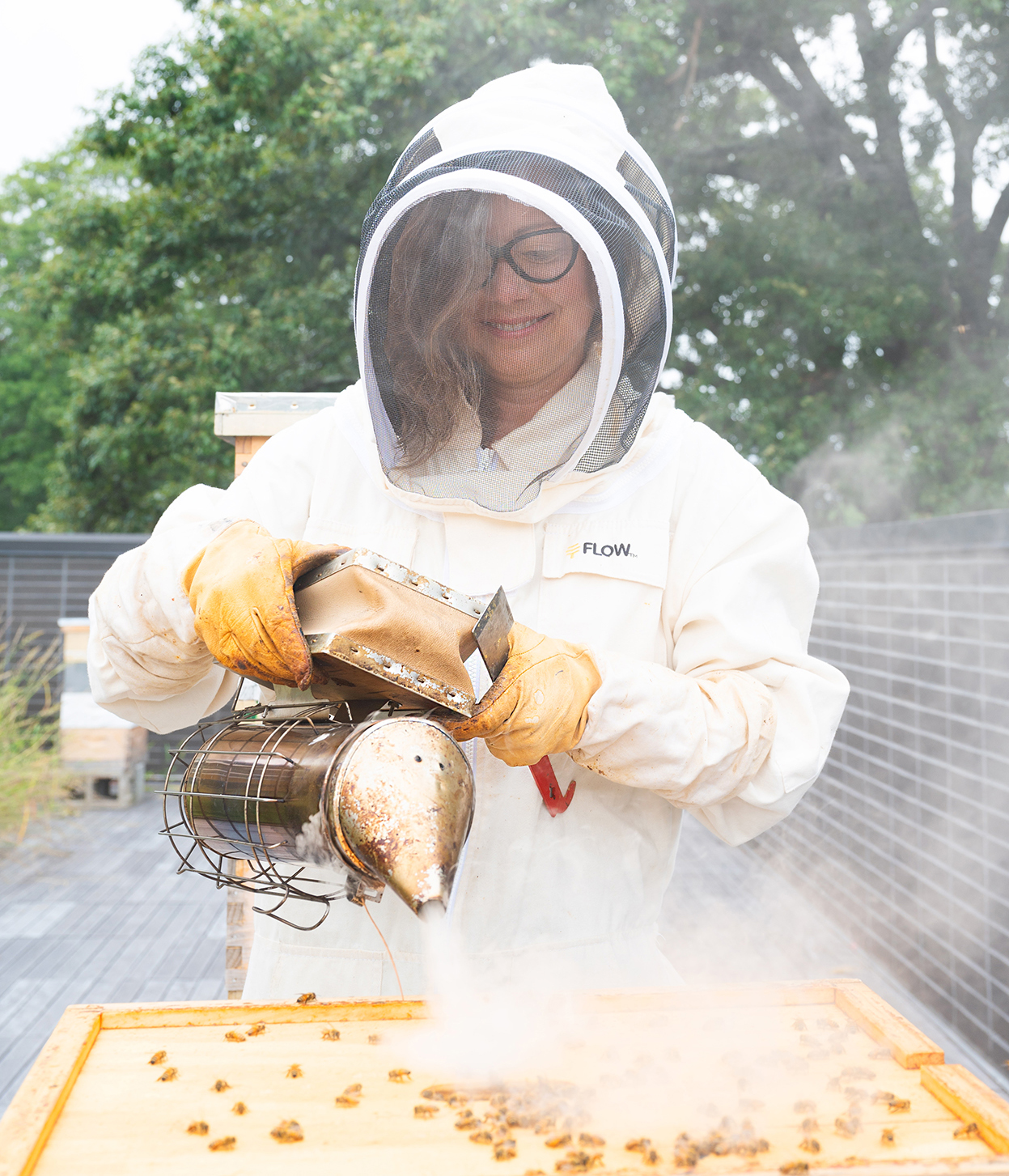
When you see something buzzing, how do you know if it will sting?
Bees sting occasionally, but in general they are not aggressive — they’re defensive, and tend to only sting when they feel threatened.
“It’s mostly wasps that sting — they’re predators, they’re carnivores, and they’re more aggressive,” said Jennifer Leavey, assistant dean for faculty mentoring in the College of Sciences and principal academic professional in the School of Biological Sciences.
Leavey also serves as director for Georgia Tech’s Urban Honey Bee Project. She offers a few tips on how to identify the myriad arthropoda around campus and shares knowledge about each.

Carpenter Bees
These bees are the largest you’ll see and are easy to identify by their shiny abdomens. They tend to hover around looking for a place to nest, mate, or eat.
“They’re kind of in your face,” Leavey said. The males are territorial, but they don’t sting — nor do any male bees or wasps.
Carpenter bees are excellent pollinators, but they also like to bore into wood, which can frustrate homeowners or those maintaining wood structures — they are less likely to bore into painted surfaces, though.
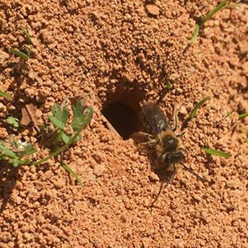
Mining Bees
Mining bees are solitary, so they don’t live in colonies, but they do like to aggregate together. They nest in the ground in what sometimes look like ant hills. They recently had their mating season in the Atlanta area, so you may have seen them buzzing around.

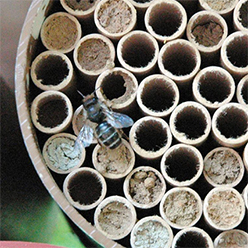
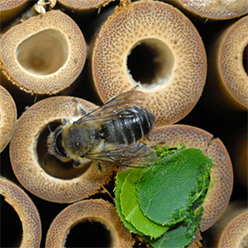
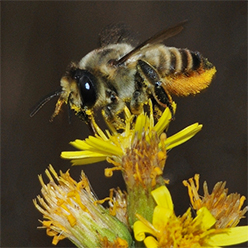
Leafcutter Bees
Their descriptive name, like the mason bee, indicates how they nest — by cutting leaves. They use the cuttings to nest in tubes as well, and the nearly perfect circle cut from a leaf is a sign that a leafcutter bee has been by.
“There are some muscadine vines near The Kendeda Building where you can see those holes in the leaves,” Leavey said.
Mason Bees
Mason bees are smaller and also solitary bees, and make nests in hollow tubes using mud. Because of that, you may sometimes see them in mudpuddles gathering materials for their nests. You may also notice they collect pollen under their abdomens, unlike honey bees or bumble bees, which gather pollen on their legs.
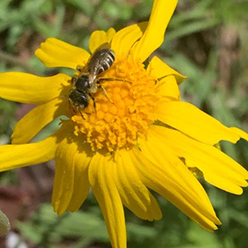
Sweat Bees
These bees are the tiniest among those in the area and are also excellent pollinators. They need salt and will sometimes land on your skin because they want the salt and water from sweat. They are often green, or sometimes have a green head and striped body.

Bumble bees
These bees are social, and there are many varieties of them, many of which are on campus. They’re fuzzy and black and white, and usually a little smaller than carpenter bees. They nest in the ground in small nests approximately the size of a fist.
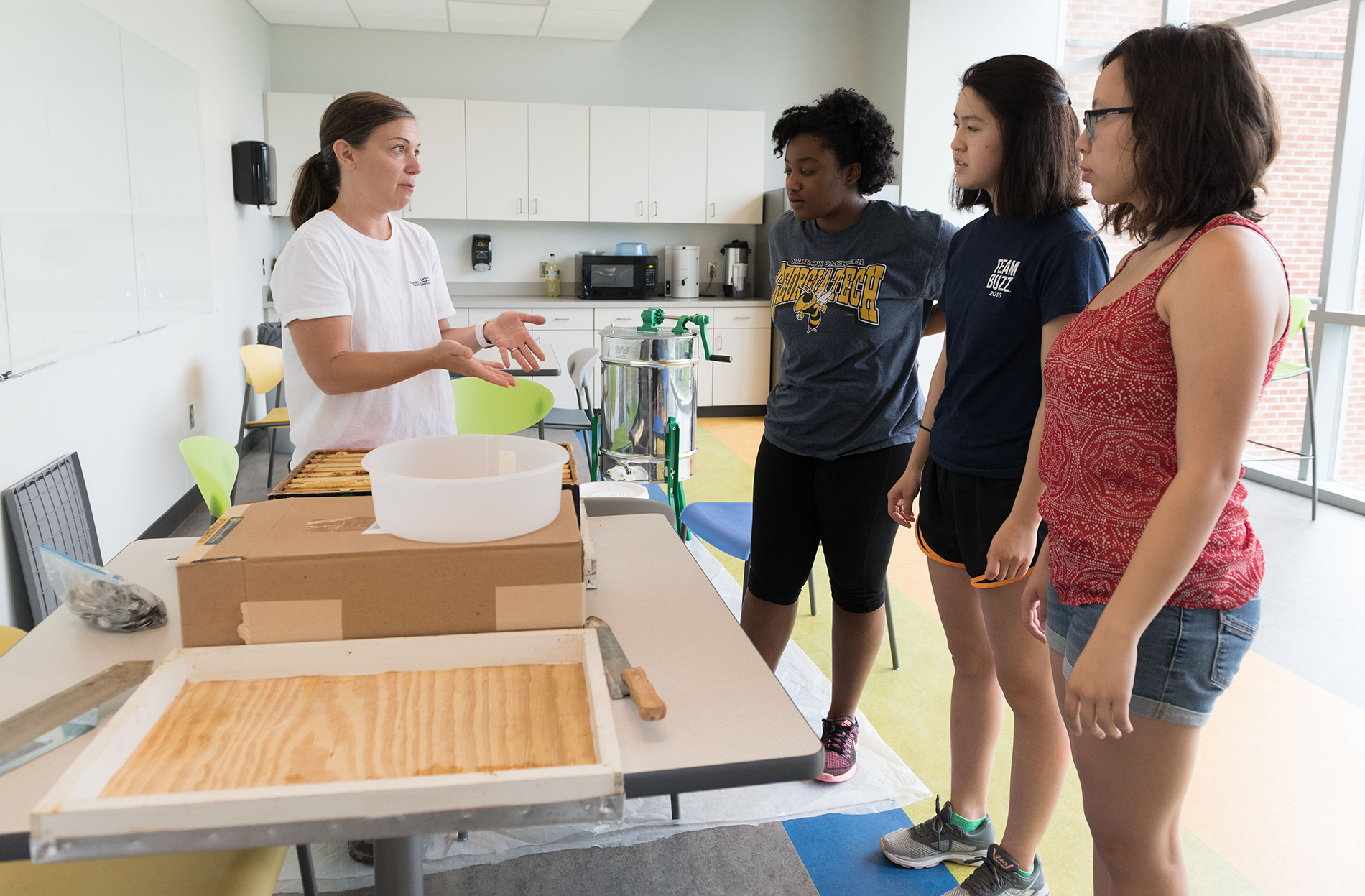
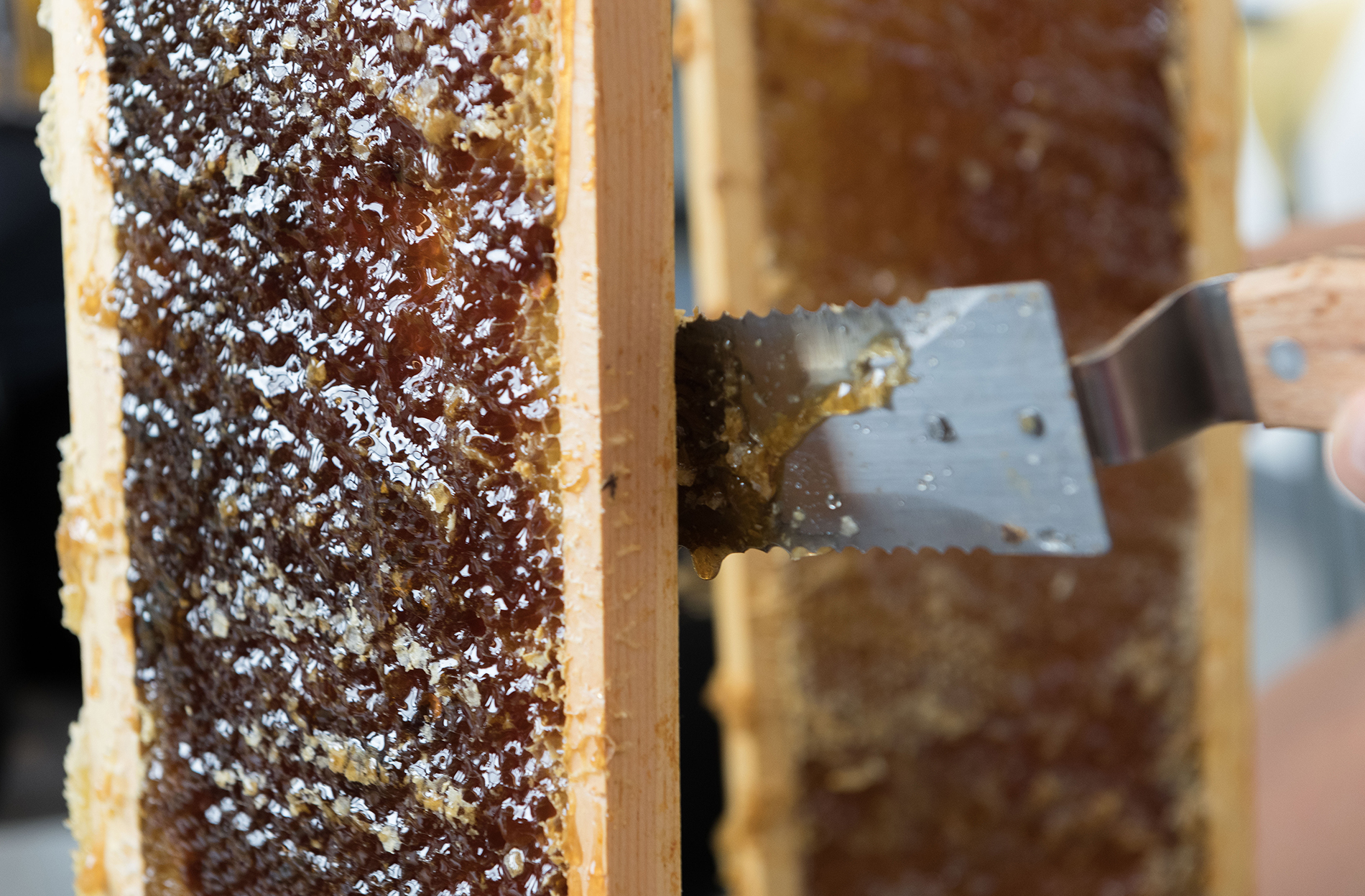
Honey Bees
Honey bees are not native to the area but are an introduced species, and you can see their hives on top of the The Kendeda Building for Innovative Sustainable Design or in the EcoCommons.
There, Georgia Tech’s Urban Honey Bee Project maintains apiaries that offer undergraduate research opportunities, as well as produce honey.
Honey bees function as pollinators for most food crops and are also exceptional model organisms for understanding complex biological systems. Unfortunately, bee populations are threatened by pesticide use, habitat fragmentation, and disease. Honey bee hives vary in size but commonly contain around 20,000 to 50,000 bees.
The Beekeeping at Georgia Tech club helps maintain these hives, and welcomes more student involvement — no experience is necessary to join.
To stay in the know about the Honey Bee Project, join their mailing list.
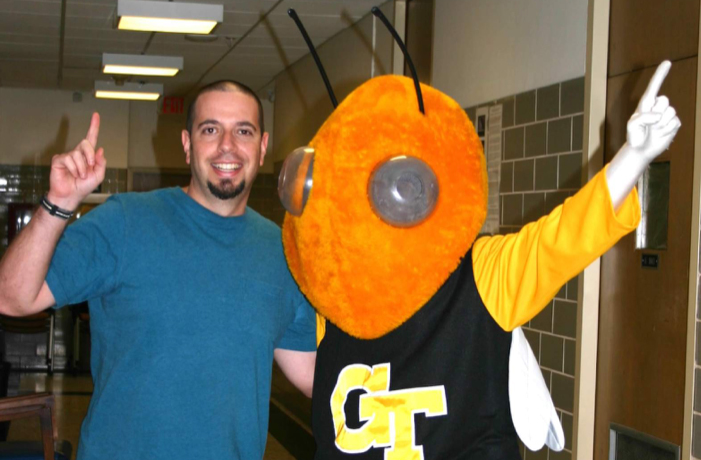
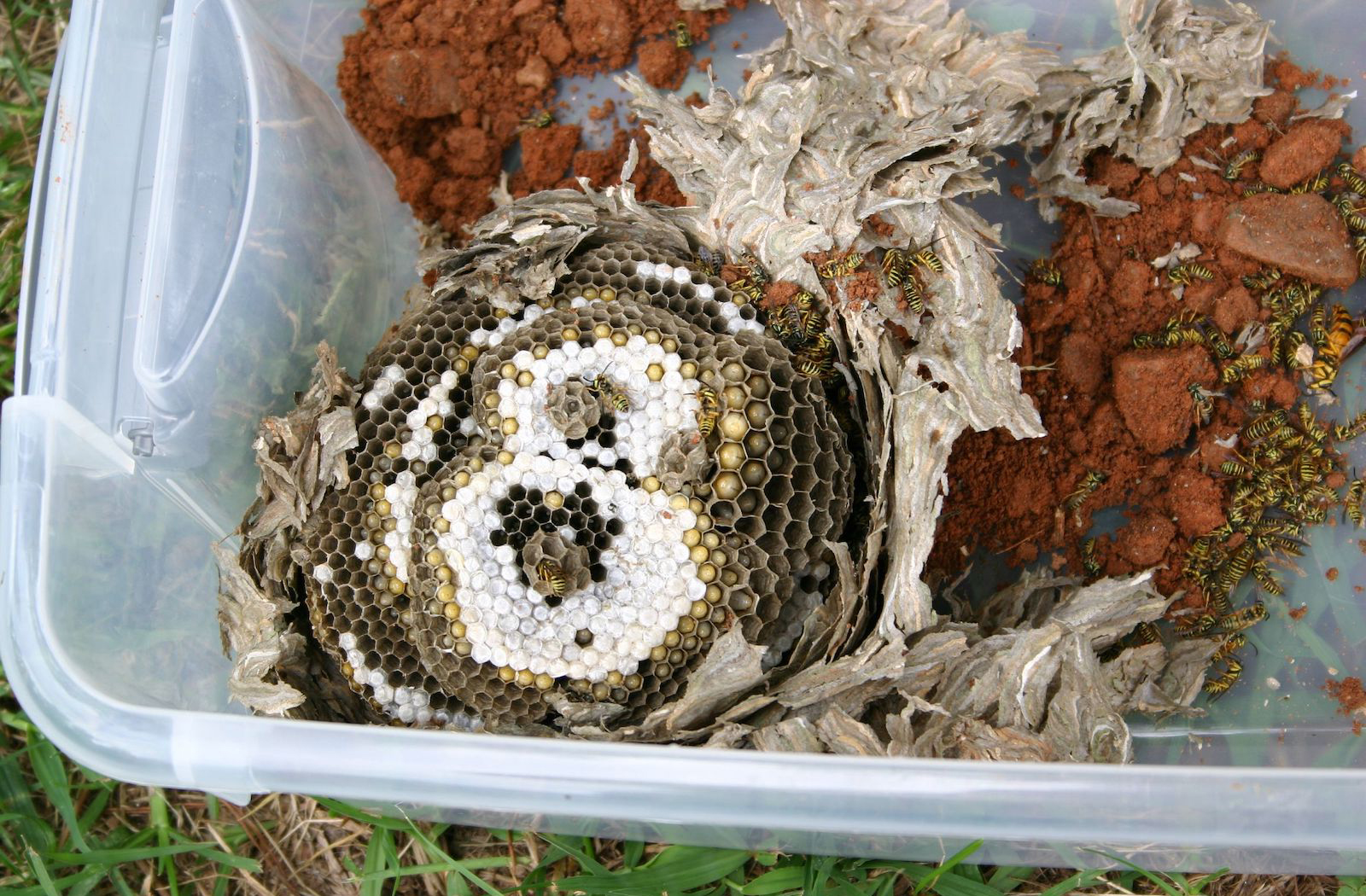
Yellow Jackets
Not just students, but also real wasps, swarm Tech’s campus. Yellow jackets sting, but only the females. They nest in the ground, and if you see a nest on campus or nearby, you may want to reach out to the Goodisman Research Group. Mike Goodisman’s team conducts research on the social behavior of these insects.
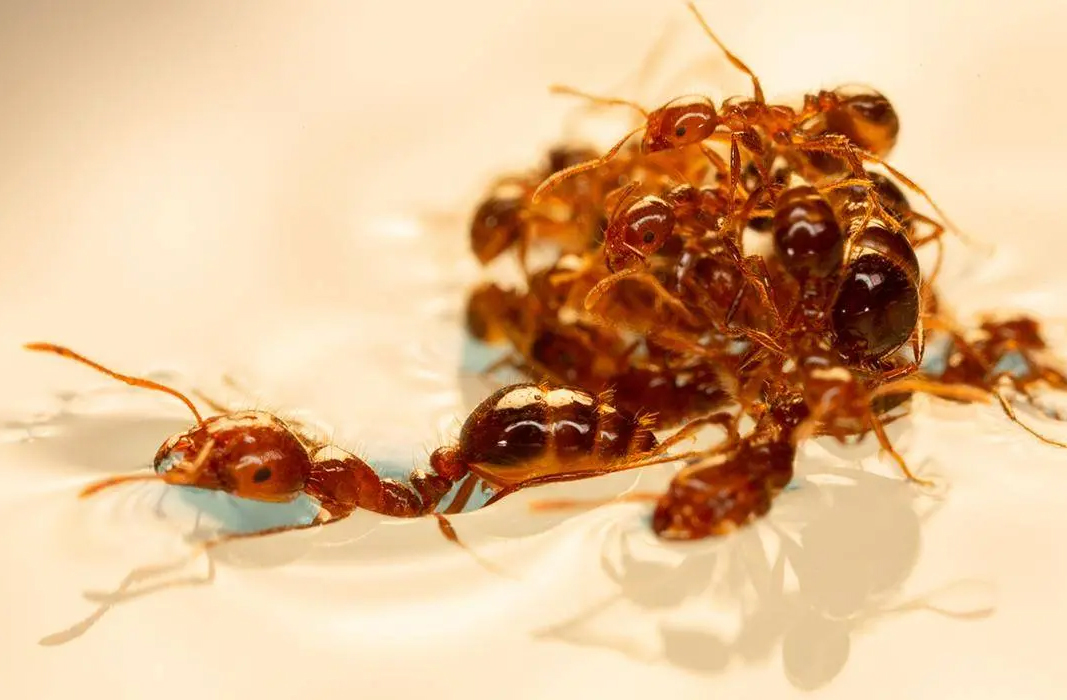
Ants
Ants also can sting, and they bite. They are close relatives to bees and wasps, and can sometimes also serve as pollinators. And, Georgia Tech researchers also study ants — most recently, looking at how they clump together and work as a team to form water-repellent rafts.
Buzzing Into Spring
Read more about Tech’s environmental efforts and related stories:
Credits
Written by Kristen Bailey
Photos by Allison Carter, Joya Chapman, and Jennifer Leavey